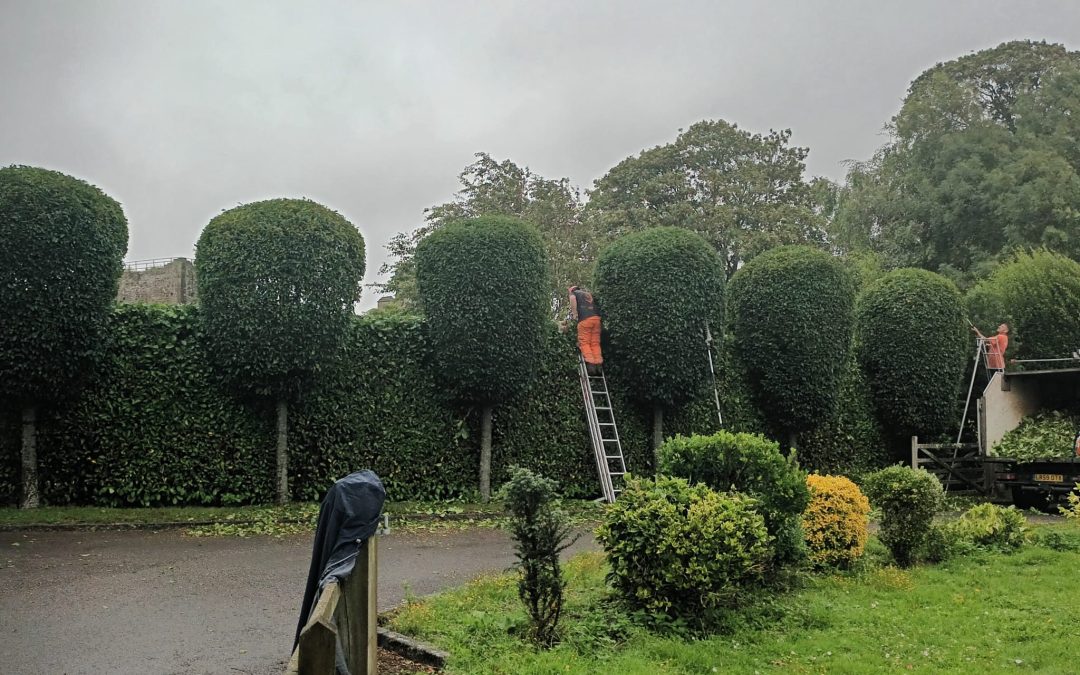The majesty of trees in our landscapes is undeniable, but these stalwarts of nature face formidable adversaries in the form of diseases. Among the various tree diseases, four stand out for their impact and significance: Acute Oak Decline, Ash Dieback, Chicken of the Woods, and Bleeding Canker. In this blog post, we delve into each of these diseases, discuss their effects, and provide essential information on what to look out for and how to help protect our cherished trees.
Acute Oak Decline (AOD):
Symptoms to Look Out For:
1. Bleeding cankers on the trunk or branches.
2. Bark cracking and peeling.
3. Crown dieback and loss of foliage.
Impact: AOD poses a significant threat to oak populations. Infected trees can die within just a few years, resulting in the loss of vital wildlife habitat and the aesthetic beauty of oak forests.
What You Can Do: If you observe these symptoms, report suspected cases to your local forestry
authorities. Prevent the spread by avoiding the movement of oak logs, firewood, or woodchips from
infected areas.
Ash Dieback (Hymenoscyphus fraxineus):
What is it? Ash Dieback is a fungal disease affecting ash trees. It causes leaf loss, crown dieback, and can lead to tree death. Common signs include wilting leaves and black lesions on stems and branches.
Symptoms to Look Out For:
1. Wilting leaves and blackened stems.
2. Crown dieback and reduced foliage.
Impact: Ash Dieback has devastated ash populations across Europe. The loss of ash trees impacts ecosystems, biodiversity, and industries like timber production.
What You Can Do: Be vigilant for these symptoms, and report suspected cases. Avoid transporting
ash wood or plants from infected areas.
Chicken of the Woods (Laetiporus spp.):
What is it? Chicken of the Woods is a fungal disease that infects a variety of hardwood trees, including oaks. It forms large, shelf-like fruiting bodies on the tree’s trunk.
Symptoms to Look Out For:
1. Large, bracket-shaped fruiting bodies.
2. White, orange, or yellowish brackets with a distinctive texture.
Impact: While this fungus primarily attacks weakened or damaged trees, it can contribute to further stress and decline in affected hosts.
What You Can Do: Properly prune and maintain your trees to minimize damage and consider removing infected fruiting bodies when safe to do so.
Bleeding Canker (Phytophthora spp.):
What is it? Bleeding Canker is caused by various Phytophthora species and affects a range of tree
species. It manifests as lesions oozing dark liquid on the trunk.
Symptoms to Look Out For:
1. Lesions or cankers with oozing dark liquid.
2. Crown dieback and wilting leaves.
3. Soil mounding or damage around the base of the tree.
Impact: This disease weakens trees, making them susceptible to secondary infections and environmental stressors.
What You Can Do: Improve tree health through proper care, avoid soil compaction, and report
suspected cases to tree experts. In the face of these tree diseases, early detection is critical. If you suspect any of these diseases in your trees, seek advice from local tree experts or arborists. Timely action can make a significant
difference in mitigating the impact of these diseases and preserving the health of our beloved trees. Together, we can protect these natural giants that contribute so much to our world.








Recent Comments